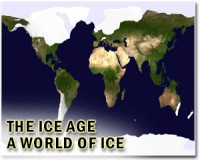| . |  |
. |
Paris (AFP) Aug 13, 2010 A giant iceberg that snapped away from Greenland last week is a signal that global warming is causing the island's continent-sized ice cap to melt faster than expected, scientists say. The 250-square-kilometre (100-square-mile) chunk, four times the size of Manhattan, broke away from the Petermann ice shelf on Greenland's northwestern tip. The breakoff -- the largest in the Arctic in half a century -- points to Greenland's worrying potential to stoke sea levels in the coming decades and centuries, climate experts say. "It is a warning sign that we are seeing changes," said University of Colorado glaciologist Konrad Steffen, who is overseeing the Greenland section of a major report by the UN Intergovernmental Panel for Climate Change (IPCC), due in 2013. "The ice sheet is continuing to lose volume at an accelerated rate," he said by phone. "We are now at 350 cubic kilometres (84 cubic miles) ice loss per year. That's more than twice the ice in all the glaciers in the Alps." If it melted completely, Greenland's ice sheet could boost the global water mark by at least five metres (17.5 feet). None of the world's several dozen top specialists believes this scenario to be likely over the next two or three centuries. But many of these experts have recently shifted from a common view that the ice sheet is largely stable, sharply revising their estimates of how much could melt by 2100. By some calculations, Greenland's runoff could boost average sea levels in 2100 by half a metre (one and a half feet) to a metre (3.25 feet) -- enough, at the upper end of the range, to lay waste to low-lying coastal cities and drive hundreds of millions of people toward higher ground. Ice shelves are created by glaciers that run off onto the coast, creating a tongue of land that spreads out onto the surface of the sea. As it extends, the shelf thins, and the front edge crumbles away. It is a natural process, which means a single event cannot be attributed by itself to global warming, said Ola Johannessen, a University of Bergen professor. Even so, the Petermann iceberg is part of a bigger picture that points to man-made climate change, he and other experts say. One thing is the iceberg's huge size, and another is the location. "We used to say the south (of Greenland) was the active part (for ice loss), that we didn't need to worry about the north. This is no longer true -- the north has started to lose ice at the same rate," said Steffen. The Petermann iceberg also bolsters suspicions, also voiced for ice loss in the Antarctica peninsula, that warming seawater eroding the underbelly of the ice shelf is the main cause of accelerating melt. This factor could be far more important than than surface melt or sub-glacial "lakes" which act as a lubricant that speeds glaciers towards the sea. If so, that's bad news, because once the ocean is warmed, it cannot be reversed over a short timescale. "The ocean has a memory of years to decades -- it takes a while before you see the change, but once it's there it will stay," Steffen said. How fast could Greenland's ice melt? The clues may lie in a deep-drilled ice core whose layers are a telltale of Earth's climate past, dating back hundreds of thousands of years. After hitting bedrock last month, the drillers will look at a key layer from 125,000 years ago, the last time Earth found itself between ice ages, as we do today. "We are keen on getting a record of this period because it was five degrees degrees Celsius (nine degrees Fahrenheit) warmer in Greenland than today," said J.P. Steffensen, a University of Copenhagen glaciologist and field manager for the core project. That rise is exactly what is predicted for the Arctic region by 2100 if average global temperatures go up by 2.0 or 3.0 Celsius (3.6 to 5.4 Fahrenheit), he noted. "You could say this is Nature's own example of what we have coming for us with future global warming."
Share This Article With Planet Earth
Related Links Beyond the Ice Age
 Arctic ice island poses no immediate threat, says discoverer
Arctic ice island poses no immediate threat, says discovererMontreal (AFP) Aug 11, 2010 The largest ice island in almost 50 years poses no immediate threat as it will take up to two years to drift through the Arctic Ocean, the Canadian who discovered it told AFP on Wednesday. Trudy Wohlleben, a forecaster from the Canadian Ice Service, spotted the massive slab of ice that broke off a glacier in Greenland last week as she analyzed raw data from a NASA satellite. At about 30 ... read more |
|
| The content herein, unless otherwise known to be public domain, are Copyright 1995-2010 - SpaceDaily. AFP and UPI Wire Stories are copyright Agence France-Presse and United Press International. ESA Portal Reports are copyright European Space Agency. All NASA sourced material is public domain. Additional copyrights may apply in whole or part to other bona fide parties. Advertising does not imply endorsement,agreement or approval of any opinions, statements or information provided by SpaceDaily on any Web page published or hosted by SpaceDaily. Privacy Statement |